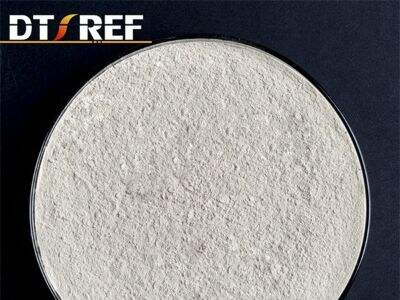Calcium aluminate cement is often used in Datong products
Is a special kind of cement that's super good at dealing with big changes in temperature? That’s a property known as thermal shock resistance — this cement does not crack or break when subjected to rapid hot-and-cold scenarios. Let’s look into why calcium aluminate cement are so cool in really hot or really cold places, and how they hold on to that temperature (whether hot or cool) when other cements might fail.
How Thermal Shock Resistance Works explained
Thermal shock occurs when materials experience a rapid change in temperature, causing them to expand or contract at a rapid pace. Think of it like sticking a hot glass in cold water; it may break because it can’t take the sudden change. But, in this kind of case, calcium aluminate cement from Datong is a superhero. It can take the heat and the cold in stride. It does this through the structure of its particles and the way they bond together, and makes it super resistant to temperature changes.
How Calcium Aluminate Cement Works Against High Temperatures
When things get super-heated, as in ovens or when making fireplaces, normal cement cracks. Datong’s calcium aluminate powder cement, on the other hand, is significantly more durable. It is designed to withstand these temperatures, which is one of the reasons it’s a popular option for grueling work. In a scorching summer or brutal winter, this concrete stand resilient.
Key Factors Affecting Thermal Shock Resistance
Cement is not all created equally. Part of the magic contributing to Datong’s tough calcium aluminate cement is the material quality and mixing that goes into its making. It’s all about the purity of the ingredients and how expertly it’s made. Datong takes care to ensure that every batch of cement meets high standards, making it prepared for extreme temperatures at all times.
Calcium Aluminate Cement in the High Temperature Binders and in the Binding Systems at High Temperatures
Make no mistake, this hardcore cement is real stuff; it’s employed in things like high-temperature kilns, furnaces, and even aerospace applications on launch structures. Picture yourself in need of a substance that isn’t going to crack, melt, or burn when subjected to extreme temperatures — that’s where Datong’s calcium aluminate cement comes into play.
Improving the Performance and Longevity with Calcium Aluminate Cement
When you select Datong’s calcium aluminate cement, you’re not only selecting a material that can withstand the heat. You’re not only getting something that’s built to last, but that works better, even in the roughest situations. It’s not just about the ability to seamless transition between temperatures, but it’s about being able to perform along the course of time as well making it a smart solution for both builders and industries seeking stability and strength.
Table of Contents
- Calcium aluminate cement is often used in Datong products
- How Thermal Shock Resistance Works explained
- How Calcium Aluminate Cement Works Against High Temperatures
- Key Factors Affecting Thermal Shock Resistance
- Calcium Aluminate Cement in the High Temperature Binders and in the Binding Systems at High Temperatures
- Improving the Performance and Longevity with Calcium Aluminate Cement
 EN
EN
 AR
AR HR
HR CS
CS DA
DA NL
NL FR
FR DE
DE EL
EL HI
HI IT
IT JA
JA KO
KO NO
NO PL
PL PT
PT RU
RU ES
ES SV
SV TL
TL ID
ID LT
LT SR
SR SK
SK UK
UK VI
VI HU
HU TH
TH TR
TR MS
MS GA
GA CY
CY AZ
AZ LO
LO LA
LA MN
MN NE
NE MY
MY KK
KK UZ
UZ

